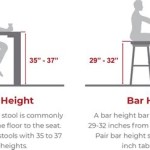```html
Building A Vegetable Garden
The establishment of a vegetable garden provides a source of fresh produce, promotes healthy eating habits, and enhances connection with nature. Careful planning and execution are essential for a successful and productive garden. This article details the key steps involved in creating a thriving vegetable garden, focusing on site selection, soil preparation, plant selection, and ongoing maintenance.
Site Selection and Preparation
The location of the vegetable garden is paramount to its success. Sunlight, water access, and soil drainage are primary considerations. Most vegetables require at least six to eight hours of direct sunlight per day. Insufficient sunlight reduces plant growth and fruit production. Choose a location that receives ample sunlight throughout the growing season.
Accessibility to water is equally important. Vegetable gardens require regular watering, especially during dry periods. Locate the garden near a water source, such as a hose bib or rain barrel, to simplify irrigation. Consider installing a drip irrigation system to conserve water and deliver it directly to the plant roots.
Soil drainage is crucial for preventing root rot and other soilborne diseases. Avoid areas with standing water or heavy clay soil that retains moisture. Conduct a soil drainage test by digging a hole approximately one foot deep and filling it with water. Observe how quickly the water drains. If the water remains for more than 24 hours, the soil drainage is poor and requires amendment.
Soil preparation is an essential step in preparing the garden bed. Remove any existing grass, weeds, rocks, and debris from the area. A sod cutter may be used for removing large areas of grass. Till the soil to a depth of at least 12 inches, breaking up compacted soil and improving aeration. This allows roots to penetrate deeply and access nutrients.
Soil testing is highly recommended to determine the pH and nutrient levels of the soil. Soil test kits are available at most garden centers and provide instructions for collecting and submitting soil samples. The results of the soil test will indicate any necessary amendments, such as lime to raise the pH or fertilizer to add nutrients. Most vegetables thrive in soil with a pH between 6.0 and 7.0.
Amending the soil with organic matter is beneficial for improving soil structure, drainage, and nutrient content. Compost, well-rotted manure, and peat moss are excellent sources of organic matter. Incorporate the organic matter into the soil during tilling, ensuring it is evenly distributed. This improves water retention in sandy soils and drainage in clay soils.
Consider raised beds or containers if the existing soil is unsuitable for vegetable gardening. Raised beds offer improved drainage, easier access, and better control over soil quality. Build raised beds using lumber, concrete blocks, or other durable materials. Fill the raised beds with a high-quality potting mix or a blend of topsoil, compost, and peat moss. Container gardening is an option where space is limited or the soil is heavily contaminated. Choose containers that are large enough to accommodate the mature size of the vegetables and ensure they have drainage holes.
Plant Selection and Planting
Selecting the appropriate vegetables is critical for a successful garden. Consider the local climate, growing season, and personal preferences. Choose vegetables that are well-suited to the region's climate and growing conditions. Consult with local nurseries or extension offices for recommendations on suitable varieties.
The length of the growing season determines which vegetables can be successfully grown. Cool-season vegetables, such as lettuce, spinach, and peas, can be planted in the spring and fall when temperatures are cooler. Warm-season vegetables, such as tomatoes, peppers, and cucumbers, require warmer temperatures and a longer growing season. Check the seed packets or plant labels for information on the days to maturity, which indicates how long it takes for the vegetables to mature from planting.
Personal preferences play a significant role in plant selection. Grow vegetables that are enjoyed by the household and that are frequently consumed. This ensures that harvested produce is utilized and not wasted.
Start seeds indoors or purchase transplants from a nursery. Starting seeds indoors allows for an earlier start to the growing season, especially for warm-season vegetables that require a longer growing period. Use seed starting trays and a well-draining seed starting mix. Provide adequate light and warmth for the seedlings to germinate and grow. Harden off the seedlings before transplanting them outdoors by gradually exposing them to outdoor conditions over a period of one to two weeks.
When transplanting seedlings or planting seeds, follow the spacing recommendations on the seed packets or plant labels. Proper spacing allows for adequate air circulation and prevents overcrowding, which can lead to disease problems. Dig planting holes that are slightly larger than the root ball and gently loosen the roots before planting. Water the plants thoroughly after planting to settle the soil and reduce transplant shock.
Consider companion planting, which is the practice of planting different vegetables together that benefit each other. For example, planting basil near tomatoes can repel pests and improve tomato flavor. Marigolds can also deter pests and improve soil health. Research companion planting combinations to optimize plant growth and pest control.
Ongoing Maintenance
Regular watering is essential for maintaining a healthy vegetable garden. Water deeply and infrequently, allowing the soil to dry slightly between waterings. Avoid overhead watering, which can promote fungal diseases. Water early in the morning to allow the foliage to dry before nightfall. Mulching around the plants helps to retain moisture, suppress weeds, and regulate soil temperature.
Fertilizing is necessary to provide plants with the nutrients they need to grow and produce fruit. Use a balanced fertilizer or a fertilizer specifically formulated for vegetables. Follow the instructions on the fertilizer label for application rates and timing. Side-dress plants with fertilizer during the growing season to provide a continuous supply of nutrients.
Weed control is crucial for preventing weeds from competing with vegetables for water and nutrients. Hand-pull weeds regularly or use a hoe to cultivate the soil. Apply mulch to suppress weed growth and make weeding easier. Avoid using herbicides in the vegetable garden, as they can harm the vegetables.
Pest and disease management is an ongoing task in the vegetable garden. Inspect plants regularly for signs of pests or diseases. Use organic pest control methods, such as insecticidal soap, horticultural oil, or Bacillus thuringiensis (Bt), to control pests. Remove diseased plants promptly to prevent the spread of disease. Practice crop rotation to reduce soilborne diseases and pest infestations.
Staking or caging plants, such as tomatoes and peppers, provides support and prevents them from sprawling on the ground. This improves air circulation, reduces disease problems, and makes harvesting easier. Use sturdy stakes or cages that are tall enough to support the mature size of the plants.
Harvest vegetables regularly as they ripen. Harvesting ripe vegetables encourages the plants to produce more fruit. Overripe vegetables can become tough or bitter. Store harvested vegetables properly to maintain their freshness and flavor. Many vegetables can be stored in the refrigerator, while others can be canned, frozen, or dried for long-term storage.
```
Vegetable Gardening For Beginners Essential Tips S A Piece Of Rainbow

Planning Your Vegetable Garden Mapping The Beds

How To Build A Vegetable Garden Box Home Timber Hardware Guide Thrifty Link

How To Build An In Ground Vegetable Garden From Scratch Growit Buildit

The Garden Clinic

How To Build Your First Vegetable Garden Walking On Sunshine Recipes

Everything To Know About Building Raised Garden Beds Lovely Greens

How To Build A Veggie Garden Bed

How To Build A Raised Garden Bed Diy Instructions

Flower Bed And Raised Ideas








